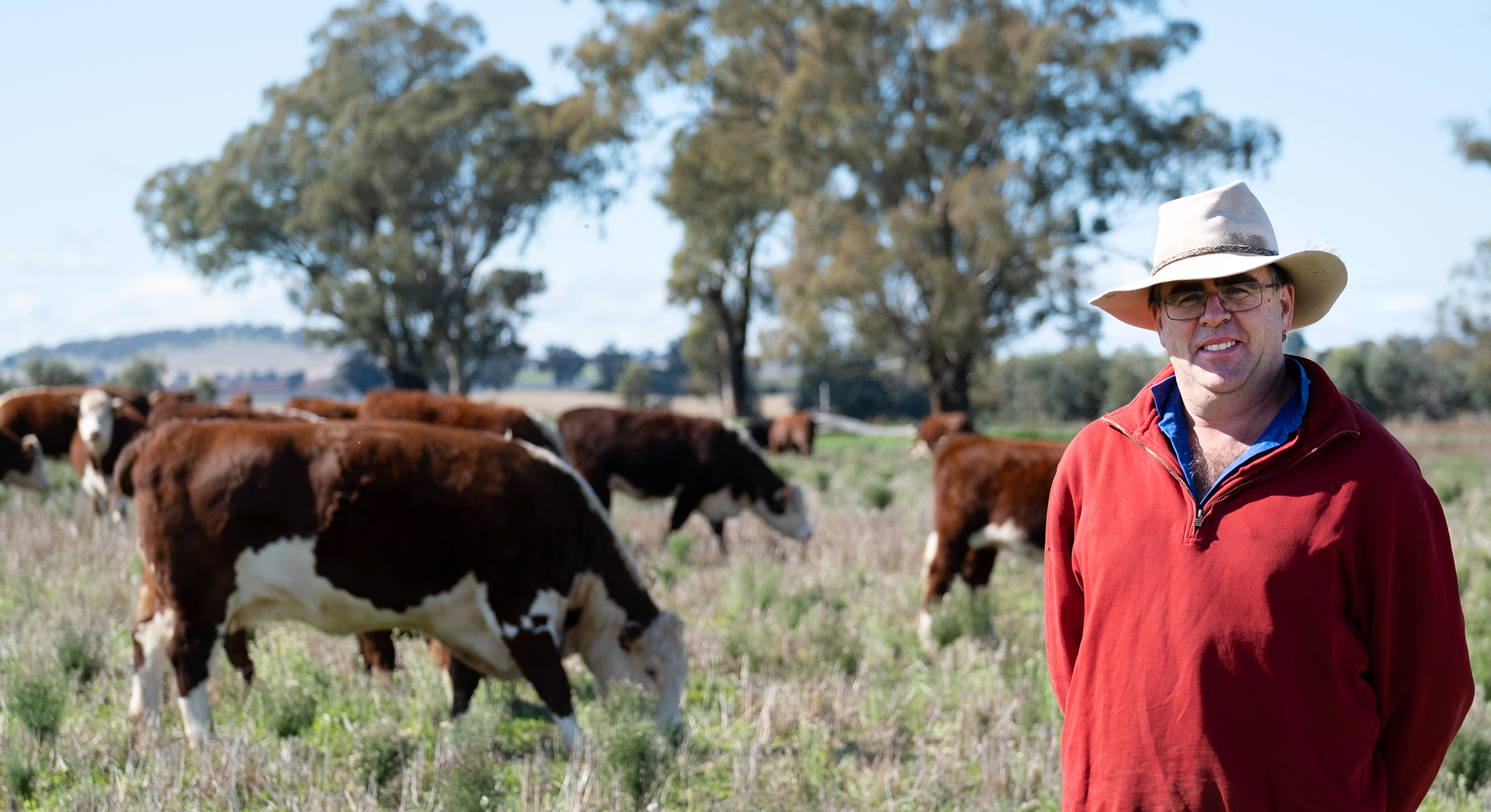
Chris Main
Chris Main
Cootamundra, NSW beef producer Chris Main relies on genetic tools and strategic grazing to meet the premium grassfed market.
When Chris returned home to his family’s properties, ‘Retreat’ and ‘Treetops’, in 2016, the enterprise mainly focused on trading steers. He found results were inconsistent, so in 2018 he switched to breeding with the goal to produce cattle which perform for his environment and management system.
Grazing management
Chris has completed several holistic grazing management courses, including Grazing for Profit.
He practises time-controlled grazing, using portable electric fencing to strip graze small areas of paddocks.
Cattle are moved onto fresh grass every day and once they’ve grazed down a paddock, they don’t come back to that paddock for nine to 12 months.
This system concentrates dung and urine on small areas which, combined with the long recovery period, ensures good pasture germination and growth response once cattle are moved off.
Genetics
Chris is working towards the entire breeding herd being bred on-property, rather than the current mix of bought and bred cattle.
His goal is to have animals of a consistent size and type, to suit his management system. “Genetically, I’m after a medium-framed animal that does well on grass,” he said.
In recognition that bulls which are physically very similar can have very different outcomes due to their different genetics, Chris uses BREEDPLAN Estimated Breeding Values (EBVs) to make selection decisions backed by data.
“I buy heifer bulls with good EBVs for low birth weights and ease of calving. Since I’ve been using these bulls, I haven't had to pull a calf once.”
He also only selects homozygous poll bulls, as he still has a few horned Herefords in his herd.
“I also look at the rib and rump fat EBVs, which are an indicator of early maturing and fertility.”
Days to calving is another important trait, because the shorter the gestation period, the more time breeders have to recover until they’re in with the bulls again.
“I also like high IMF numbers – it’s a good eating quality sign and, as an industry, we should be focusing on this.”
This is the first year Chris has calves on the ground from cattle he’s bred himself on the property.
“There’s still a fair bit of variation, but as I get more heifers I’ve bred into the breeding herd, it’ll start to become more uniform. I have a good base to work from, but there’s still a few with larger frames, which I'm working to bring down,” he said.
Marketing
Chris is not locked into a particular weight bracket, so watches the market and talks to his agent.
Accreditation across a range of quality programs, including Teys Grasslands, Greenham NEVER EVER and Roots Regenerative, gives flexibility.
Based on current prices, Chris aims to turn-off stock at 400–450kg. Depending what the markets are doing, he’ll send cattle into these programs, to local feedlots or the Wagga Wagga saleyard if that’s a better option.
Data collection
Chris believes as prices come down from the highs of recent years, collecting data is critical for commercial producers who want to become preferred suppliers.
He uses a program called Black Box Co, which collects data such as weight gain across an animal’s lifespan as they move from the farm through the supply chain.
By capturing on-farm and feedlot weight gain, as well as carcase information, he can understand how the bulls he uses are performing in the market.
“I want to get to the point where I have the track record with buyers, and the data to back it up, so I’m a preferred supplier of animals to these grassfed accreditation schemes,” Chris said.